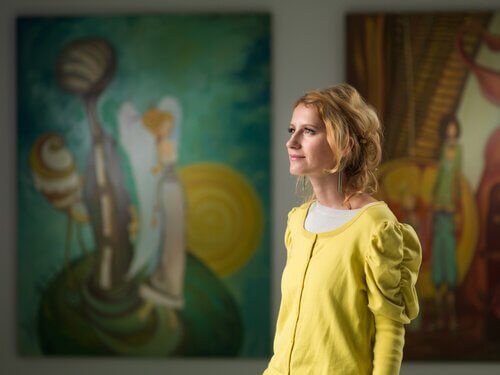If you are an art lover and you are impressed by a beautiful job or you get goose bumps when you enter a prestigious museum, congratulations!That’s right. However, there are some extremely sensitive people who, in these situations, have symptoms of Stendhal syndrome, or also known as Florence syndrome, traveler’s stress or museum disease.
This particular syndrome is triggered by the observation of works of great beauty. The history of his discovery, besides informal, is very curious, almost as much as the phenomenon itself. We invite you to meet her!
- In 1817.
- Henri-Marie Beyle.
- A famous and prestigious French writer.
- Toured Italy to gather information for his next book.
- Guess the pseudonym of this author? Stendhal!.
During your visit to Florence you traveled throughout the city, were you impressed by the art emanating from every pore of its streets: museums, churches, domes, landscapes, roofs, sculptures, facades, frescoes?Beyle wanted to enjoy every city.
When I visited the Basilica of Santa Cruz, his astonishment, his ecstasy and his enthusiasm triggered a series of physical ailments. Above all, cold sweats and deep anguish. His heart raced and he began to feel dizzy. He had to sit down and rest immediately, and once he was calm he thought.
As he later recounted in his book Naples and Florence: a trip from Milan to Reggio, his own experience provided psychology and medicine with valuable information, which he argued in the following terms:
“I had reached that level of emotion in which the heavenly sensations of fine arts and passionate feelings stumble. When I left Santa Cruz, my heart was beating, life was given to me, was I afraid of falling?
His crucial and detailed description of the phenomenon was later known as Stendhal syndrome, in honor of the discovery of his symptoms.
It wasn’t until a century later that it was first considered a syndrome. In 1979, Italian psychiatrist Graziella Magherini investigated and investigated a hundred similar cases of tourists in Florence, noting that all the symptoms they had could be summed up in a beautiful metaphor. : a kind of “artistic excess”.
This symptomatology included tachycardia, sweating, palpitations, hot flashes, tremors, emotional tension and exhaustion; in more severe cases, dizziness that caused dizziness or even depression.
Some consider Stendhal syndrome to be a psychosomatic disease due to the two-way relationship between mind and body, in this case emotional arousal would cause the physical symptoms described above, others classify it as a psychic situation. Thus, in addition to punctuality, its origin is attributed to the observation of great beauty in a short period of time, in this way Stendhal syndrome would be like an artistic clash.
Everyone can experience symptoms. We can all feel exhausted, dizzy or even feel our heart rate increase at any time. In addition, this moment may or may not coincide with what we admire a work of great beauty, so this is a very unusual syndrome.
This usually happens to tourists and visitors from cities very sensitive to art and whose main reason for the trip is their admiration, usually begins in places that captivate and that, for whatever reason, have a very intense emotional meaning for them.
In recent decades, Stendhal syndrome has become a benchmark for individuals’ reaction to works of art, especially when they are particularly beautiful or largely exposed in one place, but, like almost everything, it is not without controversy. .
There is no doubt that when we listen to a song that brings back precious memories, we cannot help but move, even if you put on goose bumps when you enter a room, something moves us inside. Art is emotion.
Although recognized by most clinical psychologists, others question, question and consider it a simple myth; believe that Stendhal syndrome is a pure suggestion, that is, it is alone in the mind; on the other hand, the most skeptical think that the unconscious of visitors to the city deceives them. Your suggestion leads them to experience different symptoms.
Tourism in Italy has increased greatly in recent years, art has become popular and democratized, and cases of this phenomenon have tripled in Florence hospitals, hence the name Florence syndrome.
Florence was the birthplace of the Renaissance and remains one of the most beautiful cities with the greatest artistic history, so the scientific community is concerned about the possible economic interests that may be at the root of this phenomenon, such as the intention of attracting more visitors, increasing the collection or increasing the reputation of its beauty.
What do you think?
Do you know Jerusalem syndrome?

